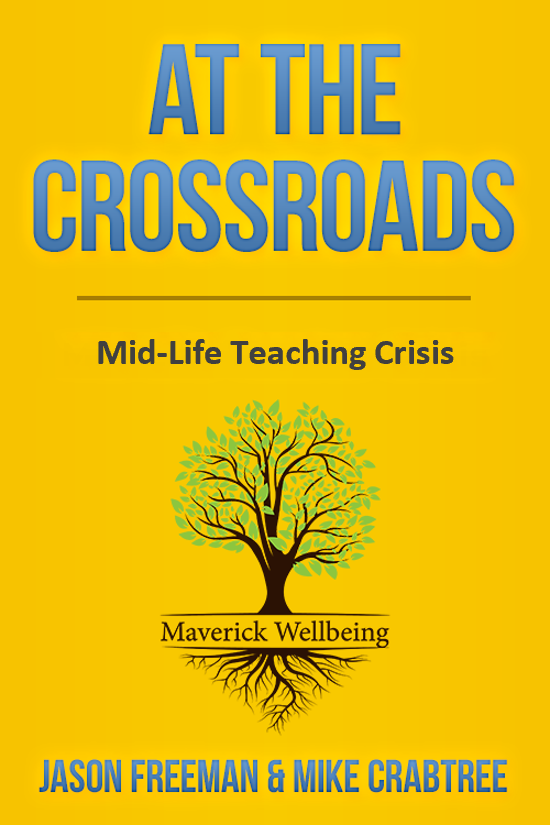What can you do when you find yourself facing a mid-life teaching crisis? Renowned educators Jason Freeman and Mike Crabtree address the compelling subject of mid-life teaching hurdles in their illuminating course, At the Crossroads – Mid-Life Teaching Crisis. Through an in-depth exploration, they provide invaluable insights for educators navigating mid-career challenges and seeking revitalization.
The Power of Perspective
A mid-life teaching crisis often stems from factors such as burnout, dwindling motivation, or a sense of professional stagnation. Freeman and Crabtree delve into these complexities, exploring how this crisis can actually serve as a crossroads between professional disillusionment and a refreshing rebirth of passion for teaching.
Their primary argument is that these turning points can indeed transform into opportunities for growth with the right perspective. Crabtree’s insight provides a useful framework: “It’s kind of that crossroads point where you start thinking about what you’ve been doing and what you’re going to do.”
To navigate this crossroad successfully, they suggest three fundamental steps:
- Recognize and confront the issue – Acknowledge the feelings of disillusionment or stagnation, and understand that it’s a common phase in the teaching career.
- Align personal passion with professional goals – Seek ways to merge personal interests and professional targets, thereby infusing a new sense of purpose into teaching.
- Embrace change and personal growth – Be open to evolving teaching methodologies and continually seek to enhance personal and professional competencies.
Redefining Classroom Success Beyond Traditional Metrics
An essential aspect Freeman and Crabtree discuss is redefining success. They propose that educators must establish their own parameters of success, expanding beyond the confines of standardized test scores. Crabtree says, “We’ve got to define what success looks like in our classroom.” This approach encourages a more comprehensive view of student development and learning outcomes.
For an individualized approach to defining success, consider the following:
- Setting personal benchmarks – Establish your own criteria for student success that align with your teaching philosophy and objectives.
- Promoting overall student growth – Focus on the holistic development of students, encompassing cognitive, social, emotional, and behavioral aspects.
- Nurturing critical thinking and problem-solving skills – Shift the emphasis from rote memorization to fostering critical and creative thinking abilities.
Empowering Education Through Community Strength & Support
Freeman and Crabtree underscore the immense strength inherent in the educator community. They advocate for creating supportive environments where educators can openly discuss their challenges, celebrate their victories, and exchange innovative ideas.
To effectively leverage the power of the community, try the following:
- Encourage peer discussions and feedback sessions – Create platforms for constructive dialogue and mutual feedback to enhance teaching practices.
- Share innovative teaching methodologies – Exchange novel teaching strategies and tools that have proven effective in various classrooms.
- Celebrate shared victories and learn from collective challenges – Foster a culture of collective growth, where successes are celebrated, and failures are viewed as learning opportunities.
Igniting Innovation & Inspiration in Classrooms

Freeman and Crabtree also highlight the transformative impact of innovation in classrooms. When recounting his personal experience by using a school 5k race as an interactive math lesson, Crabtree demonstrates how real-life scenarios can be integrated into academic concepts, resulting in a more engaging learning environment.
Effective, innovative teaching strategies can include:
- Application of real-life scenarios – Incorporate real-world situations to make academic concepts more relatable and engaging.
- Promotion of interactive learning experiences – Facilitate classroom activities encouraging student participation and collaborative learning.
- Utilization of technology and multimedia tools – Leverage digital tools to diversify teaching methods and cater to varied learning styles.
Freeman and Crabtree stress the significance of inspirational teaching. They urge educators to both seek and provide inspiration within their communities. As Freeman aptly suggests, “Start bringing out the brilliance of your fellow teachers.”
Embracing the Transformative Journey in Midlife Teaching
Mid-career teaching involves a journey of continuous evolution, innovation, and inspiration. When approached with the right mindset, a mid-life teaching crisis can catalyze growth and rejuvenation. The invaluable insights provided by Freeman and Crabtree in their course, At the Crossroads – Mid-Life Teaching Crisis, offer a roadmap for educators on this transformative journey.
Remember Crabtree’s words: “Be happy, and continuously pursue what feels right for you.” Your impact as an educator is profound and far-reaching, and your unique journey will continue to inspire and shape the future of education.


